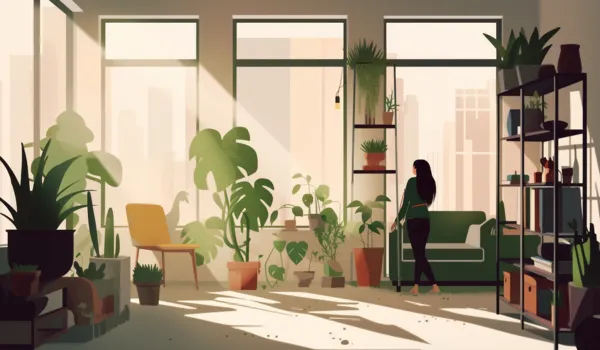Going Green: How To Make Your Home More Sustainable
Want to make a difference for the planet from the comfort of your own home? Learn how to go green and live sustainably with these easy tips!
Want to make your home more sustainable? Here are some tips to get you going:
- Cut energy use: Buy energy-efficient LED light bulbs, and appliances, then switch off electronics when not needed.
- Conserve water: Fit low-flow showerheads and taps, and repair any leaks quickly.
- Choose eco-friendly materials: When building or renovating, go for sustainable options like bamboo flooring, recycled glass countertops, or reclaimed wood furniture.
- Compost: Set up a compost bin for food scraps and yard waste, which can then be used to fertilize your garden.
- Grow your own food: Plant a veggie or herb garden in your yard or window box; this reduces the need for store-bought produce.
By following these tips and making small changes around your home, you can have a big impact on the environment and help create a more sustainable future.
Reducing Energy Usage
Let’s look at ways to make your home more sustainable. Start by reducing energy usage. You can do this in various ways:
- Switch to energy-efficient tech to reduce your electricity consumption.
- Make your own compost to reduce waste and create nutrient-rich soil for your plants.
Reducing energy usage is not only great for the environment, but it can also help you save on energy costs. Try these ideas!
Get Your Hand on Your Eco-Friendly Living Starter Guide!
Switch to energy-efficient light bulbs
Switch to energy-saving light bulbs–it’s smart and easy! These lights use 80% less energy than traditional ones. Plus, they last longer and don’t give off as much heat. Here’s how:
- Research the different types of energy-saving light bulbs–LED or CFL.
- Choose the right bulb for you–brightness, color temperature, wattage.
- Replace your old incandescent bulbs with your new energy-efficient ones.
- Dispose of your old bulbs correctly–they have hazardous materials that can harm the environment.
By doing this, you’ll lower energy bills and reduce your carbon footprint. Pro Tip: Get your friends and family to switch to energy-efficient bulbs too!
Install a smart thermostat
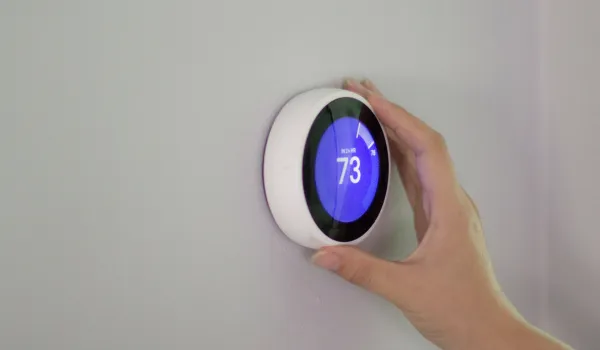
Make your home more energy efficient and sustainable with a smart thermostat! You can control the temperature from anywhere with a smartphone, tablet, or computer.
Here’s how to install one:
- Switch off the circuit breaker to your HVAC system.
- Label the wires from the old thermostat.
- Install the mounting plate and connect the wires according to the manufacturer’s instructions.
- Attach the new thermostat to the mounting plate and turn the power back on.
- Follow the setup instructions to connect the thermostat to your Wi-Fi.
- Set your desired temperature and schedule through the app or web interface.
Pro tip: Smart thermostats will help save energy by learning your preferences and adjusting the temperature accordingly. Plus, many utility companies offer rebates for installing energy-efficient thermostats, so check if you’re eligible.
Unplug electronics when not in use
Unplugging electronics is an easy way to save energy and be more eco-friendly. Just using the power button isn’t enough; these devices still use energy when not in use. Here are some tips for unplugging:
- Use power strips; plug into the strip, then switch off when not in use.
- Don’t forget chargers; unplug them from the wall when not needed.
- Take a look at what you use most frequently; turn off and unplug the ones you don’t need.
Doing these habits daily will give you major energy savings and make your home more sustainable.
Conserving Water
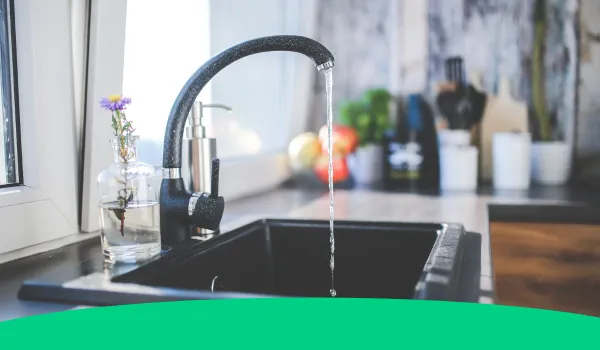
Conserve water in your home! You can make a huge difference to the environment. Here’s how:
- Get a low-flow showerhead.
- Invest in a smart sprinkler system.
- Cut down on your water usage – there are plenty of simple steps to take!
Fix any leaky faucets or pipes
Leaky faucets or pipes? Don’t worry! Fixing them is super easy and helps the environment. You could be wasting gallons of water every day. Here’s what to do:
- Identify any leaks.
- Fix with plumber’s tape or a wrench.
- Still not working? Call a pro.
By fixing leaks, you can save up to 3,000 gallons of water a year. An added bonus? Lower monthly bills and a greener planet.
Install a low-flow showerhead
Have a sustainable shower with a low-flow showerhead! It can reduce water consumption by up to 50% and save you money on your monthly water bill. Here’s how to install it:
- Turn the existing showerhead counterclockwise and remove it.
- Clean the shower arm threads with a rag.
- Wrap the plumber’s tape in a clockwise direction around the threads.
- Screw the new low-flow showerhead onto the shower arm clockwise.
- Hand-tighten the showerhead and use pliers to tighten it one more turn.
For extra savings, look for showerheads with the WaterSense label – they meet EPA criteria for water efficiency and performance. Enjoy a warm and sustainable shower while reducing your environmental impact!
Collect and reuse rainwater
Collecting and reusing rainwater is a simple way to make your home more sustainable. Do this:
- Put a rain barrel or large container at the end of your downspout.
- Install a debris screen or filter to stop leaves and other debris from clogging up the barrel or container.
- Use collected rainwater for watering plants, cleaning cars or outdoor furniture, or flushing the toilet (with a special plumbing system).
By collecting rainwater, you reduce reliance on municipal water sources. Plus, you lower your water bill and help the environment by reducing stormwater runoff.
Using Sustainable Materials
Sustainability in your home? Opt for sustainable materials! Natural, recycled or renewable – they’re often healthier and better for the environment. Here, we’ll find out all the options and how to decide which materials to use. Boom!
Use bamboo or cork flooring
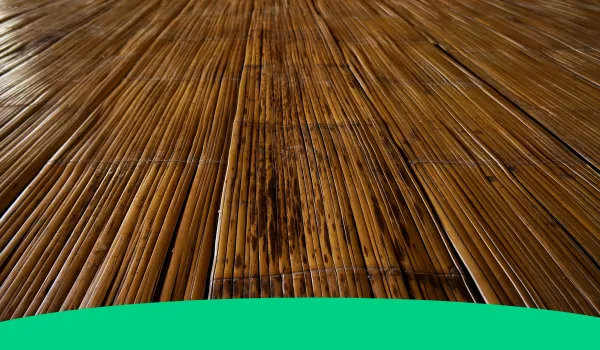
If you’re wanting your home to be more sustainable, think of using bamboo or cork flooring as an alternative to regular hardwood or tile flooring. Bamboo and cork are both great eco-friendly flooring options.
- Bamboo flooring is created from a renewable resource. It grows quickly and is strong enough to last many years. Installing and maintaining it is easy, so it can suit any room in your home.
- Cork flooring is made from the bark of cork trees. This allows the tree to keep growing without being affected. The unique look and feel of cork flooring makes it a stylish addition to your home. It’s naturally fire-resistant, insect-repellent, and reduces sound – making it perfect for many living spaces.
Choosing sustainable flooring options like bamboo or cork can help reduce your effect on the environment whilst also adding worth and style to your home.
Consider purchasing second-hand furniture
If you want to make your home more sustainable, why not buy second-hand furniture? This can reduce the need for new furniture production, as well as help you save cash and add individuality to your home. Here are some ideas to keep in mind when hunting for pre-owned furniture:
- Check it out – Check for any harm that may impact its lifespan or safety.
- Choose quality – Go for furniture made from solid wood, metal, or other long-lasting materials.
- Get imaginative – Think about reimagining or upcycling second-hand furniture to give it a different look and purpose.
Do these things and you’ll be able to reduce your ecological footprint, save money, and make your home more special and eco-friendly.
Choose products with eco-friendly certifications
Make your home more sustainable! Look for eco-friendly certifications like Energy Star, Forest Stewardship Council, and Cradle to Cradle. These labels are on appliances, furniture, and building materials. They show that the products were made using sustainable materials and practices – reducing their environmental impact.
By opting for these products, you’re reducing your carbon footprint and helping the planet. Pro tip: Research and read the certification labels. Make sure they align with your values and purchasing needs.
Recycling and Composting
Recycling and composting are two great ways to make your home more sustainable. Start by sorting your waste into different categories and disposing of it properly. Composting is a fantastic way to lower your carbon footprint and provide nutrient-rich soil for your garden.
Let’s delve deeper into these two practices!
Set up a backyard compost bin
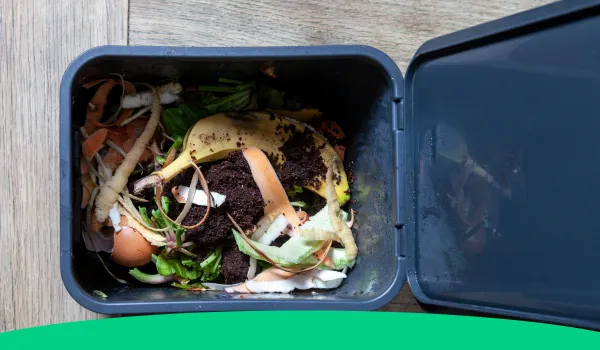
Create your own backyard compost bin to reduce your carbon footprint and make your home more sustainable! Here’s how:
- Gather materials, like a plastic or wooden bin, organic matter, and a compost thermometer.
- Choose a suitable spot for your bin – somewhere well-ventilated and on a level surface.
- Layer brown and green organic materials.
- Cover the bin and mix the contents every few weeks with a shovel or pitchfork.
- Monitor the temperature and moisture levels of your compost pile and adjust them accordingly.
- Reap the rewards of composting, such as nutrient-rich soil for your garden and reduced waste.
Pro tip: Don’t add meat, bones, dairy, or oily food scraps to your compost pile – they can attract pests and slow down decomposition.
Research what items can be placed in your recycling bin
Want to make your home more sustainable? Research what can be recycled! This helps stop waste from ending up in landfills and conserves natural resources. Here’s how:
- Contact local waste management and recycling centers to find out what materials are accepted.
- Look online to find out what common items can be recycled, like cardboard, paper, plastics, and aluminum.
- Check labels on packaging to see if it’s recyclable or not.
- Buy products made from recyclable materials if you can.
By taking these steps, you’re helping future generations live on a healthier planet. Pro Tip: Start a compost bin to reduce food waste and create nutrient-rich soil for your garden.
Upcycle or repurpose old items instead of throwing them away
If you want a more sustainable home, upcycling is the way to go! It’ll save you money and help the environment. Here are some ideas:
- Turn T-shirts into cleaning rags or dish towels.
- Glass jars and bottles make great food storage containers or vases.
- An old ladder can be a bookshelf or display rack.
- Old wooden pallets can be planters or coffee tables.
There’s so much potential! You can create something new and useful from almost anything. Plus, you’ll feel proud knowing you’re reducing waste.
Supporting Renewable Energy
Go green in your home! Reduce your carbon footprint and back renewable energy!
Start by transitioning to a renewable energy source. Various options are available, each with its own benefits and drawbacks. Let’s explore them!
Purchase renewable energy credits
Want to make your home more sustainable? Buying renewable energy credits is one great way to support renewable energy. Benefits include:
- Less reliance on fossil fuels and furthering the development of renewable energy sources.
- Reducing your carbon footprint and offsetting greenhouse gas emissions.
- Supporting the growth of the renewable energy industry, plus creating jobs and boosting economic growth.
Check with your local utility company or third-party providers to purchase renewable energy credits. Do your research and pick a reliable provider that backs certified renewable energy projects.
Pro tip: You can even install solar panels or wind turbines on your property, generating your own renewable energy. Plus, you could earn credits by selling excess energy back to the grid.
Consider installing solar panels on your roof
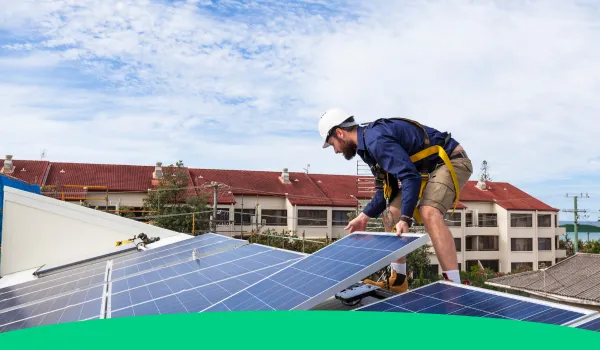
Think about installing solar panels on your roof to help renewable energy and make your home eco-friendly. Not only do solar panels decrease your carbon footprint, but they can also save you money in the long run. Follow these steps:
- Measure your roof’s area to calculate how many solar panels you’d need.
- Research and compare solar panel types, models, efficiency, durability, and cost.
- Contact a professional installer for consultation, design, and installation.
- Get permits and approvals from your local government and utility company.
- Enjoy sustainable and renewable energy for your home and planet while saving money.
- Pro tip: If the upfront cost for installation is too high, look into financing or leasing options.
Switch to a renewable energy provider.
Want to make your home more sustainable and support renewable energy? Switch to a renewable energy provider!
Look at providers near you with wind or solar-based energy options. Making the switch can reduce your carbon footprint and help the environment. Plus, you might save money in the long run.
Do your research to make sure the provider uses sustainable energy sources and fits your budget. Some providers even offer incentives, like free energy audits or discounted rates during off-peak hours. That’s a step towards a greener future and less of an environmental impact. Plus, you might save money.
Frequently Asked Questions
1. How can I reduce my home’s energy consumption?
To reduce your home’s energy consumption, you can start by replacing your old incandescent bulbs with energy-saving LED lights or using a programmable thermostat to control your heating and cooling systems. You can also invest in energy-efficient appliances or simply unplug electronics when they’re not in use.
2. What steps can I take to conserve water in my home?
To conserve water in your home, you can start by fixing any leaks and installing low-flow showerheads and faucets in the kitchen and bathroom. You can also limit your water usage by avoiding long showers, using a dishwasher instead of washing dishes by hand, and turning off the faucet while brushing your teeth or shaving.
3. How can I reduce waste in my home?
To reduce waste in your home, you can start by composting your food scraps, recycling as much as possible, and opting for reusable containers instead of single-use plastic items. You can also donate unwanted items to charity and buy second-hand items instead of new ones when possible.
4. What options do I have for renewable energy in my home?
You can generate renewable energy in your home by installing solar panels or a wind turbine. You can also consider purchasing energy from a renewable energy supplier in your area or investing in a green energy certification program like LEED or ENERGY STAR.
5. How can I incorporate sustainable materials in my home?
You can incorporate sustainable materials in your home by installing bamboo or cork flooring, using recycled materials for insulation and countertops, and opting for products made from responsibly-sourced wood. You can also consider purchasing eco-friendly furniture and decor.
6. What resources are available to help me make these changes?
You can find a wealth of information and resources online, including guidance from the Environmental Protection Agency’s Energy Star program and the U.S. Green Building Council. You can also consult with a professional contractor or green building specialist for personalized advice.


